FCC Policy
FCC updates subsea cable regulations; repeals 98 “outdated” broadcast rules and regulations
The U.S. Federal Communications Commission (FCC) is updating its regulations for subsea cables to enhance security and streamline the licensing process. The updates, adopted at an FCC open meeting on August 7th, aim to address national security concerns related to foreign adversaries (like Russia and China) and accelerate the deployment of these critical communication networks. This initiative, developed by the Office of International Affairs in collaboration with the Public Safety and Homeland Security Bureau and the Enforcement Bureau, is intended to bolster national security. The new rules address potential vulnerabilities of subsea cables to foreign adversaries, recognizing their critical role in global internet traffic and financial transactions.
FCC Chairman Brendan Carr said that while the FCC often focuses on airwaves as vital but unseen infrastructure, submarine cables are just as essential. “They are the real unseen heroes of global communications. [The Commission] must facilitate, not frustrate the buildout of submarine cable industries.” Indeed, the vast global network of subsea cables carry ~ 99% of the world’s internet traffic and support more than $10 trillion in daily financial transactions.
……………………………………………………………………………………………………………………………………………………………………………………………………………………………………………………
The risk of Russia- and China-backed attacks on undersea cables carrying international internet traffic is likely to rise amid a spate of incidents in the Baltic Sea and around Taiwan, according to a report by Recorded Future, a U.S. cybersecurity company. It singled out nine incidents in the Baltic Sea and off the coast of Taiwan in 2024 and 2025 as a harbinger for further disruptive activity. The report said that while genuine accidents remained likely to cause most undersea cable disruption, the Baltic and Taiwanese incidents pointed to increased malicious activity from Russia and China. “(Sabotage) Campaigns attributed to Russia in the North Atlantic-Baltic region and China in the western Pacific are likely to increase in frequency as tensions rise,” the company said.
……………………………………………………………………………………………………………………………………………………………………………………………………………………………………………………
The FCC also repealed 98 “outdated” broadcast rules and regulations as part of a deregulation effort aimed at streamlining and modernizing the agency’s rules. These rules, deemed obsolete or unnecessary, included outdated requirements for testing equipment and authorization procedures, as well as provisions related to technologies like analog broadcasting that are no longer in use. The move is part of the FCC’s “Delete, Delete, Delete” docket, which seeks to identify and remove rules that no longer serve the public interest.
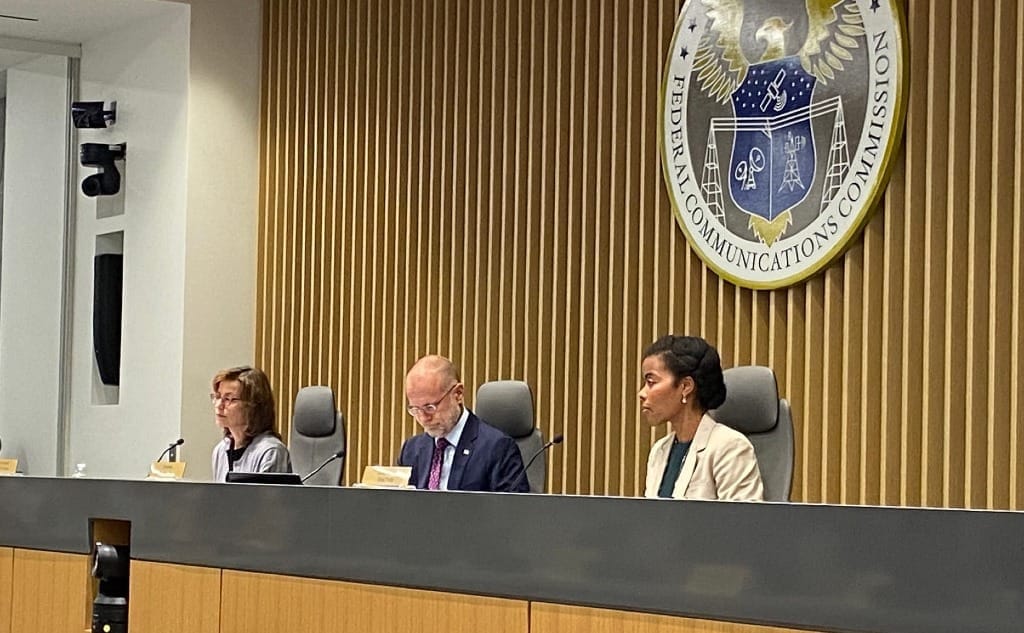
FCC Chairman Brendan Carr (middle) and Commissioners Olivia Trusty (right) and Anna Gomez (left) at the Open Meeting on August 7, 2025 in Washington, D.C. Photo credit: Broadband Breakfast/Patricia Blume.
Many of the repealed rules relate to analog-era technologies and practices that are no longer relevant in today’s digital broadcasting landscape. These rules cover various areas, such as obsolete subscription television rules, outdated equipment requirements from the 1970s, unnecessary authorization rules for standard practices, obsolete international broadcast provisions, and sections that were for reference only or were duplicative or reserved. In particular:
- The repealed rules covered equipment requirements for AM, FM, and TV stations that are now obsolete, as well as rules related to subscription television systems that operated on now-defunct analog technology.
- The FCC eliminated rules regarding international broadcasting that used outdated terms and procedures.
- Several sections that merely listed citations to outdated FCC orders, court decisions, and policies were also removed.
- The FCC eliminated a rule requiring FM stations to obtain authorization for stereophonic sound programs, which is now standard practice.
References:
https://www.fcc.gov/August2025
https://www.fcc.gov/document/fcc-deletes-outdated-broadcast-rules-and-requirements/carr-statement
https://docs.fcc.gov/public/attachments/DOC-413057A1.pdf
https://broadbandbreakfast.com/fcc-unanimously-approves-buildout-of-secure-submarine-cables/
New FCC Chairman Carr Seen Clarifying Space Rules and Streamlining Approvals Process
U.S. federal appeals court says FCC’s net neutrality/open internet rules are “unlawful”
Intentional or Accident: Russian fiber optic cable cut (1 of 3) by Chinese container ship under Baltic Sea
Sabotage or Accident: Was Russia or a fishing trawler responsible for Shetland Island cable cut?
Geopolitical tensions arise in Asia over subsea fiber optic cable projects; U.S. intervened to flip SeaMeWe-6 contractor
China seeks to control Asian subsea cable systems; SJC2 delayed, Apricot and Echo avoid South China Sea
Who will be the big bidders at upcoming FCC C-band and AWS auctions?
Under new chairman Brendan Carr, the U.S. Federal Communications Commission (FCC) plans to open up more C-band (3.98-4.2 GHz) spectrum for 5G, recalling a golden age of spectrum awards that brought in tens of billions of dollars. The first C-band auction, which drew to a close in early 2021, brought in a staggering US$94 billion. Verizon made headlines by shelling out $52.9 billion at the auction, including incentive payments and clearing costs, so naturally there is talk of whether it will look to repeat its performance in the next C-band sale. But until we have more information it’s all just speculation. “In 2020, the FCC conducted the most successful auction in history when it released 280 megahertz of mid-band spectrum in the C-band for 5G,” Carr wrote, in a blog post.
At its upcoming February 25, 2025 Open Commission Meeting, the FCC (among other things) will:
- Enhancing National Security Though the Auctioning of Spectrum Licenses
The Commission will consider a Notice of Proposed Rulemaking that would update 10 year-old AWS-3 service-specific competitive bidding rules to bring those rules in line with current practice as the first step in fulfilling the Commission’s statutory obligation to initiate an auction of licenses for the AWS-3 spectrum in the Commission’s inventory by June 23, 2026, under the Spectrum and Secure Technology and Innovation Act. (GN Docket Nos. 25-70, 25-71, 13-185) - Exploring New Uses for Mid-Band Spectrum in the Upper C-band
The Commission will consider a Notice of Inquiry exploring whether, and if so how, we could free up additional mid-band spectrum for new services in the Upper C-band to meet projected spectrum demand, spur economic growth, and advance American security interests. (GN Docket No. 25-59)
CTIA – the U.S. wireless industry’s primary trade group – quickly cheered the news: “We applaud Chairman Carr for his swift action in exploring how best to make the upper C-band available for 5G wireless commercial use,” CTIA CEO Meredith Attwell Baker said in a statement. However, Carr didn’t specifically say whether that C-band 2.0 auction would be for 5G. “We will vote on a notice of inquiry that asks whether the commission should open up additional portions of the C-band (3.98-4.2 GHz) for more intensive use. We want to hear your views,” Carr wrote.
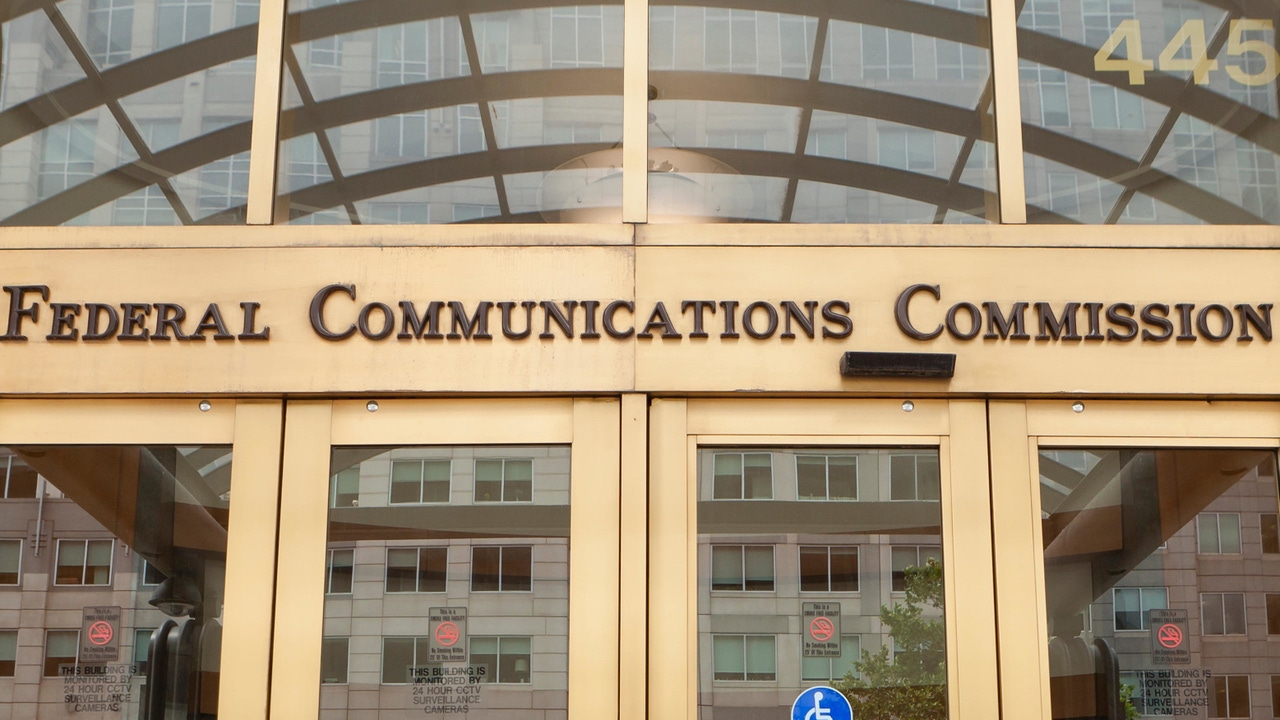
Elon Musk’s SpaceX and the major U.S. 5G telcos (AT&T, Verizon, T-Mobile) have expressed interest in upper C-band spectrum. SpaceX said in January that the FCC should develop “a modernized sharing framework” for the upper C-band, presumably so that it could be used by both satellite operators (like SpaceX) and terrestrial operators (like AT&T, Verizon and T-Mobile).
“Establishing a modernized sharing framework for the upper C-band that welcomes multiple new entrants is essential to solidify American leadership in 6G, which will interweave terrestrial and satellite networks into a seamless consumer experience,” SpaceX wrote. Politico noted that FCC’s Carr – has been developing ties to Musk.
“While the outcome is far from certain, we give an edge to the wireless interests,” wrote Blair Levin, a policy adviser to New Street Research and a former high-level FCC official, in a recent note to investors. “In this administration it appears that ‘whatever Elon wants, Elon gets.’ So, it is difficult to have conviction on the outcome.” Indeed, there are plenty of ways for the FCC to handle the upper C-band situation. Levin wrote, “There are multiple compromises available, such as allocating some to exclusive and some to satellite sharing or getting back more spectrum from the current users,” he wrote.
Other industry watchers are unsure about SpaceX vs wireless industry C-band spectrum bidding:
- “It’s unclear whether SpaceX could overcome the wireless lobby’s desire for more terrestrial spectrum,” analyst Tim Farrar, with TMF Associates, told Light Reading.
- “The upper C-band is an enormous opportunity to unleash additional spectrum for mobile 5G, for LEO [low-Earth orbit] satellite direct-to-device connectivity, or for a combination of both,” Michael Calabrese told Light Reading. Calabrese is director of the Wireless Future Project, which is part of New America’s Open Technology Institute think tank. Calabrese said that FCC Chairman Brendan Carr “is wise to open a notice of inquiry to explore what form of repurposing or sharing will best promote innovation and the connectivity needs of the future. The one certainty is that the 220 megahertz in C-band that was not repurposed five years ago should be a priority for reallocation to a higher and better use today.”
–>The previous C-band sale may have been the peak of wireless network operator spectrum spending, but we could see the big players pony up a significant amount of cash again in the next year or so at FCC auctions.
……………………………………………………………………………………………………………………………………………………………………………………………………………………
Mr. Carr also talked about an upcoming AWS-3 frequency auction, indicating that it is on track to take place by mid-2026 as required by law. In one of his first official statements as the new chairman of the FCC, Carr said he plans to auction AWS-3 spectrum before the end of next year. He added that the commission would consider holding another auction of C-band spectrum.
“This month, we will vote to kickstart the process for reauctioning a large number of AWS-3 spectrum licenses that have sat in inventory for years. This auction will be a win-win. It brings new spectrum into play for commercial use. And the proceeds from this auction will also cover the costs of the national security initiative known as “rip and replace”—an effort that is removing untrustworthy technology, like Huawei and ZTE gear, from networks. Specifically, our AWS-3 notice of proposed rulemaking will ensure that the Commission is on track to meet its statutory obligation to complete this auction by June 23, 2026.’
Those auctions will help pay for Rip and Replace (mostly Huawei network equipment) from U.S. telco networks. The Rip and Replace program was created in 2020 to remove Chinese components from U.S. wireless communications systems. The Rip and Replace fund needs an additional $3B in order to finish its mission.
AT&T is the most likely to spend big on the AWS-3 spectrum sale, given that it has less mid-band spectrum than its rivals, and CEO John Stankey has already expressed interest in the airwaves.
References:
https://www.telecoms.com/spectrum/new-fcc-chair-looks-to-repeat-c-band-mega-auction
https://broadbandbreakfast.com/fcc-to-vote-on-aws-auction-inquiry-into-upper-c-band-2/
https://www.lightreading.com/5g/could-elon-grab-some-of-5g-s-spectrum-
https://www.lightreading.com/5g/carr-hands-a-spectrum-gift-to-5g-industry
https://www.ctia.org/news/ctia-statement-on-chairman-carrs-announcement-on-upper-c-band
https://www.fcc.gov/February2025
Eric Schmidt: FCC C-Band Auction Dooms U.S. 5G Future
UPDATED: Mid-band Spectrum for 5G: FCC C-Band Auction at $80.9B Shattering Records
FCC Auction 110 for mid-band 5G spectrum gets $21.9B in winning bids
FCC Chairman Pai Reviews 5G FAST plan and importance of the C-Band (3.7 GHz to 4.2 GHz) auction
4 U.S. Mobile Operators offer C-band FCC proposal to address aircraft interference
FCC Auction 108 (2.5 GHz) ends with total proceeds << than expected; T-Mobile expected to be #1 spectrum buyer
FCC launches new 5G mid-band wireless spectrum auction (FCC Auction 108)
Bloomberg: 5G in the U.S. Has Been a $100 Billion Box Office Bomb
U.S. federal appeals court says FCC’s net neutrality/open internet rules are “unlawful”
U.S. Court of Appeals for the Sixth Circuit today struck down the Federal Communications Commission’s (FCC’s) hard-fought and long-debated net neutrality/open internet rules. The FCC had sought to reinstate a sweeping policy established under President Obama that was designed to treat internet service as an essential public service, similar to a water or power utility. The court ruled that broadband communications, including broadband delivered via mobile networks, is classified as an “information” service rather than a more heavily regulated “telecommunications” service. That important distinction means the FCC lacks the authority to impose the current set of rules, the court’s three-judge panel found.
The court said a recent U.S. Supreme Court ruling had removed a judicial framework that allowed courts to interpret rules with deference to the federal agency that created them. The 6th Circuit said the FCC did not have the statutory authority to change the classification of broadband internet to a telecommunications service. That role rests with Congress. The case was brought by the Ohio Telecom Association, a trade organization representing internet service providers (ISPs).
The negative ruling arrives about six months after the Sixth Circuit court stayed the FCC’s network neutrality rules, under current Chairwoman Jessica Rosenworcel, which aimed to resurrect broadband under a more heavily regulated Title II/telecommunications service classification. The FCC, under Rosenworcel, passed the current set of net neutrality rules in April 2024.
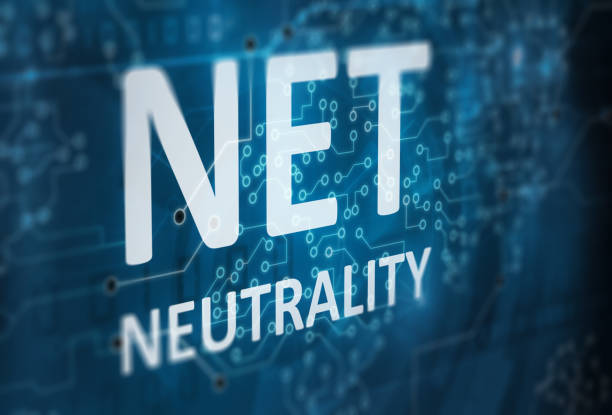
Backgrounder: Under the net neutrality rules, internet service providers (ISPs) would have been subjected to greater regulation. A Republican-led commission repealed the rules in 2017 during President-elect Donald Trump’s first term in office. Early last year, the FCC — then back under Democrat control — voted to formalize a national standard for internet service to prevent the blocking or slowing of information delivered over broadband internet lines. The core principle of open internet meant that internet service providers couldn’t discriminate among content suppliers. The order also would have given the FCC increased oversight to demand that internet providers respond to service outages or security breaches involving consumers’ data. The FCC cited national security, saying increased oversight was necessary for the commission to effectively crack down on foreign-owned companies that were deemed to be security threats.
“Using ‘the traditional tools of statutory construction’ … we hold that Broadband Internet Service Providers offer only an ‘information service’ … and therefore, the FCC lacks the statutory authority to impose its desired net-neutrality policies through the ‘telecommunications service’ provision of the Communications Act,” the Sixth Circuit court, based in Cincinnati, OH, said in its ruling.
“We conclude that Broadband Internet Service Providers at the very least offer consumers the ‘capability’ of ‘retrieving’ ‘information via telecommunications’,” the Sixth Circuit explained. “Accordingly, the FCC’s contrary conclusion is unlawful.”
The decision is another blow to an FCC that had fought for the rules to be reinstated under Rosenworcel and the outgoing Biden administration. The decision is a win for broadband service providers along with several organizations, including ACA Connects, CTIA, NCTA and USTelecom, that had argued against the rules, holding that the market has been thriving under a “light-touch regulatory framework.”
In a statement about the Sixth Circuit Court’s decision, FCC chairwoman Rosenworcel said:
“Consumers across the country have told us again and again that they want an internet that is fast, open, and fair. With this decision it is clear that Congress now needs to heed their call, take up the charge for net neutrality, and put open internet principles in federal law.”
However, the ruling is likely just the start of a larger wave of deregulatory shifts that’s expected to occur in 2025 and beyond under the new Trump administration. Incoming FCC Chairman Brendon Carr (see quote below) is the senior Republican on the five-member commission and has championed many of Trump’s causes. One of the authors of the Project 2025 policy paper, he has outlined plans to remove regulations conservatives consider overbearing or outdated. He will also wrestle with looming budget crunches and court rulings that threaten to erode the federal agency’s overall authority.
Some reactions to Thursday’s ruling:
1. “We hope that today’s decision will allow for a refocused conversation about effective ways to achieve national goals with respect to broadband access,” Mike Romano, EVP of NTCA – The Rural Broadband Association, said in a statement.
2. MoffettNathanson analyst Craig Moffett noted in an emailed statement to investors that the broadband market has been concerned that if the FCC had the authority to impose Title II reclassification, it could open the door for the Commission to impose broadband price regulation. “That risk is now put to bed,” he said. The decision was of little surprise after the FCC’s ability to start enforcing the rules was delayed after the court put them on hold amid a review of the precedent set by the US Supreme Court’s decision last June to strike down the decades-old Chevon deference (a.k.a. the Loper Bright) decision. That decision stands to limit the power and authority of federal agencies, such as the FCC, in interpreting certain laws that are considered ambiguous. Notably, Chevron has played a significant role over the years in establishing the FCC’s authority to set and enforce network neutrality regulations. “Indeed, the reason we and others stopped worrying about Title II was because it was clear that the judicial principle of Chevron Deference wasn’t going to survive much longer,” Moffett wrote.
3. Free Press, a long-time network neutrality advocate, argued that the court wrongly rejected the FCC’s jurisdiction on the matter. “Beyond being a disappointing outcome, today’s 6th Circuit opinion is just plainly wrong at every level of analysis,” Matt Wood, VP of policy and general counsel at Free Press, said in a statement. “Today’s decision will let the incoming Trump FCC abdicate its responsibility to protect internet users against unscrupulous business practices … It’s rich to think of Donald Trump and Elon Musk’s hand-picked FCC chairman characterizing light-touch broadband rules as heavy-handed regulation, while scheming to force carriage of viewpoints favorable to Trump on the nation’s broadcast airwaves and social media sites.”
4. Statement from Tully Center for Free Speech on Net Neutrality Ruling:
As expected, FCC Commissioner & incoming FCC Chairman Brendon Carr (Republican) cheered news of the ruling by stating, “Over the past four years, the Biden Administration has worked to expand the government’s control over every feature of the Internet ecosystem. You can see it in the Biden Administration’s efforts to pressure social media companies into censoring the free speech rights of everyday Americans. You can see it in the Biden Administration’s demand that the FCC adopt ‘digital equity’ rules for the Internet—sweeping regulations that give the Commission nearly limitless powers over the Internet. And you can see it in the Biden Administration’s decision to impose so-called ‘net neutrality’ rules by applying Title II or utility-style regulations to the Internet.”
References:
https://www.fcc.gov/document/chairwoman-rosenworcel-sixth-circuit-court-net-neutrality-decision
https://docs.fcc.gov/public/attachments/DOC-408580A1.pdf
FCC restores net neutrality order, but court challenges loom large
Analysis: FCC attempt to restore Net Neutrality & U.S. standards for broadband reliability, security, and consumer protection
FCC Draft Net Neutrality Order reclassifies broadband access; leaves 5G network slicing unresolved
RWA, CWA and EchoStar file FCC petitions against T-Mobile’s acquisition of UScellular
The Rural Wireless Association (RWA), Communications Workers of America (CWA), and EchoStar (owns Dish Network) all filed FCC petitions requesting the agency reject T-Mobile’s proposed acquisition of “substantially all” of UScellular’s wireless operations, including some spectrum.
The proposed transaction would remove UScellular from the U.S. telecom market, thereby eliminating one of the last few remaining regional wireless network operators and strengthening T-Mobile’s position across the 21 states where UScellular maintains operations.
Public interest and consumer groups (include Public Knowledge, New America’s Open Technology Institute and Community Broadband Networks Initiative) also opposed approval. They argued that the proposed merger between T-Mobile and UScellular would “result in the loss of the fifth largest marketplace competitor with a network covering approximately 10 percent of the country’s population, reallocate spectrum resources predominantly to the three top wireless carriers only to make it nearly impossible for a fourth competitor to emerge in the market, and waste valuable funding secured for building out 5G networks.”
The deal is relatively small as telecom mergers go — valued at about $4.4 billion, including $2 billion in assumed debt — but has ignited substantial opposition. UScellular is the nation’s fifth-largest wireless carrier.
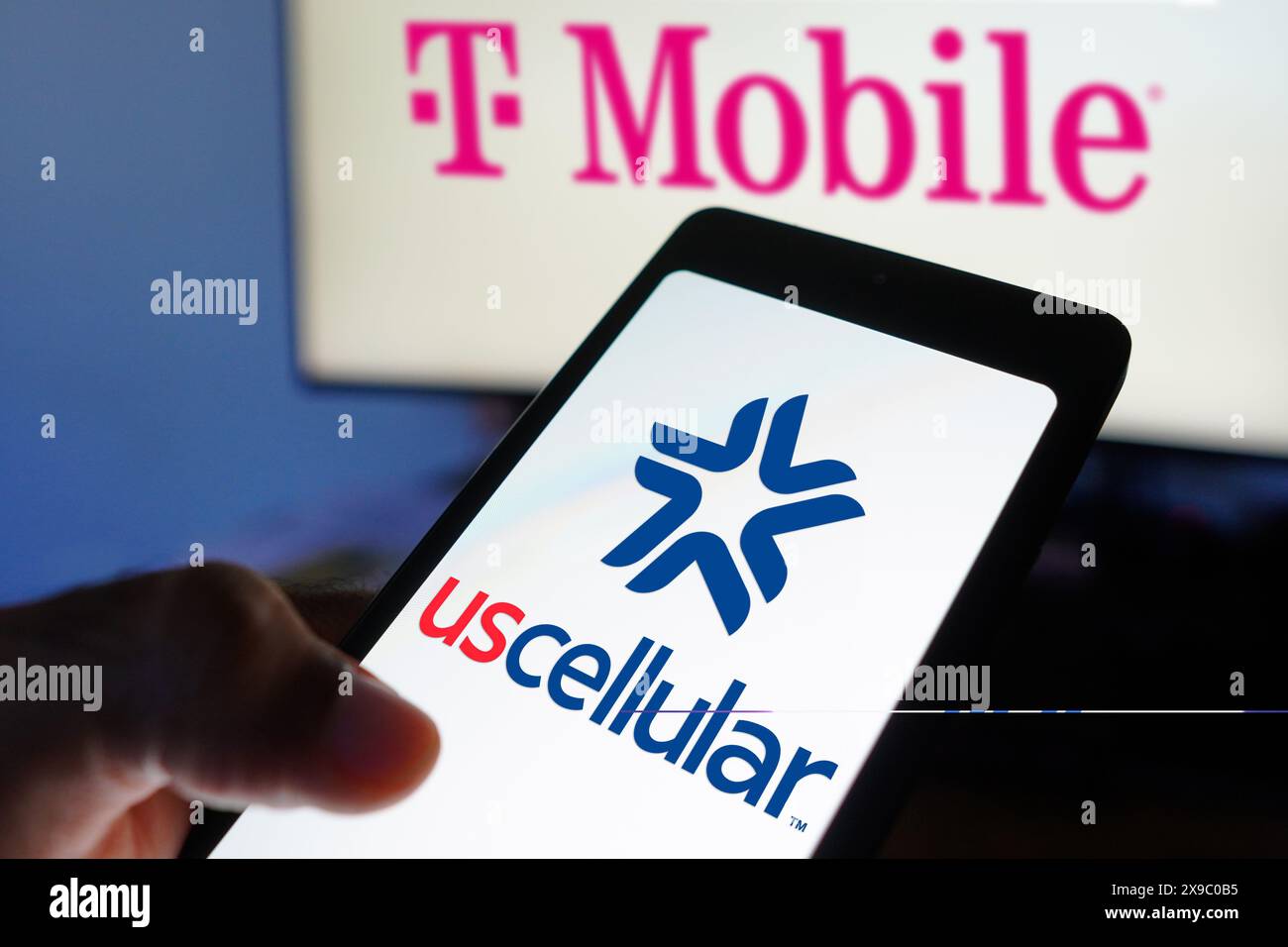
“T-Mobile is asking for the commission’s blessing to further entrench its dominance over the wireless voice and broadband markets, making it harder for others (like EchoStar) to compete. The commission should deny this transaction, which threatens to substantially harm competition while offering only illusory public interest benefits,” EchoStar wrote in a new filing to the FCC.
“The merger would substantially lessen competition in local markets where UScellular operates, hurting workers, consumers and other rural carriers. The commission should reject the proposed transaction as currently structured and require specific enforceable measures … to ensure that the merger remains in the public interest,” wrote the Communications Workers of America (CWA), a union that counts thousands of members inside AT&T and Verizon but has struggled to unionize workers in T-Mobile. The Rural Wireless Association also voiced its opposition.
This past May, T-Mobile said it would purchase around 30% of UScellular’s spectrum holdings, all of its 4.5 million customers and its retail stores in a deal worth $4.4 billion. T-Mobile has also said it will make job offers to “a significant number” of UScellular’s employees as part of the transaction. Following T-Mobile’s announcement, both AT&T and Verizon inked deals to acquire roughly $1 billion each worth of UScellular’s spectrum. T-Mobile officials still expect to close the UScellular transaction next year.
“I don’t know how many mergers you’ve heard of in the past that are like, yeah, I can promise you better networks and lower prices right from the get-go, and the company, of course, will benefit from the synergies, and it’s highly accretive. So this is going to be a win all the way around, and I’m confident the government will see it that way as well,” T-Mobile CEO Mike Sievert said this week at an investor event.
However, the U.S. Department of Justice (DoJ) advised a deeper review of T-Mobile’s UScellular proposed acquisition due to T-Mobile’s foreign owner Deutsche Telekom, which indirectly holds 50.42% of T-Mobile’s stock and also holds a proxy agreement that authorizes it to vote additional shares.
Many pundits expect T-Mobile to ultimately close on its purchase of UScellular thanks to the incoming Trump administration, which is expected to be more friendly to acquisitions than the Biden administration has been. As a precedent, Donald Trump’s first administration immediately approved T-Mobile’s $26 billion purchase of Sprint in 2020.
References:
https://www.fcc.gov/ecfs/document/1209299836114/1
https://www.fcc.gov/ecfs/document/120973502037/1
T-Mobile to acquire UScellular’s wireless operations in $4.4 billion deal
Aftermath of Salt Typhoon cyberattack: How to secure U.S. telecom networks?
Salt Typhoon Attack: On December 4, 2024, a top U.S. security agency representative confirmed reports that foreign actors, state-sponsored by the People’s Republic of China, infiltrated at least eight U.S. communications companies, compromising sensitive systems and exposing vulnerabilities in critical telecommunications infrastructure. This was part of a massive espionage campaign that has affected dozens of countries. Salt Typhoon has targeted telcos in dozens of countries for upward of two years, officials added.
Dated legacy network equipment and years of mergers and acquisitions are likely impeding the ability of telecommunications providers to prevent China inspired cyber-attacks. Until telecom operators fully secure their networks, China will keep finding ways to come back in, officials have warned.
- On Thursday, FCC chair Jessica Rosenworcel proposed a new annual certification requirement for telecom companies to prove they have an up-to-date cybersecurity risk management plan. More below.
- Senior Cybersecurity and Infrastructure Security Agency and FBI officials confirmed Tuesday that U.S. telcos are still struggling to keep the China-backed hackers out of their networks — and they have no timeline for when total eviction is possible.
FCC Chair Jessica Rosenworcel suggested ‘telecom carriers’ raise their network security methods and procedures: “The cybersecurity of our nation’s communications critical infrastructure is essential to promoting national security, public safety, and economic security,” said Rosenworcel. “As technology continues to advance, so does the capabilities of adversaries, which means the U.S. must adapt and reinforce our defenses. “While the Commission’s counterparts in the intelligence community are determining the scope and impact of the Salt Typhoon attack, we need to put in place a modern framework to help companies secure their networks and better prevent and respond to cyberattacks in the future.”
Rosenworcel’s plan is to make U.S. telcos submit some kind of annual certification to the FCC, proving their cybersecurity measures are up to scratch. The clear inference from the attack itself and all the subsequent attempts to shut the stable door after the horse has bolted is that those efforts currently fall short of the mark. Understandably, none of the specific deficiencies have been publicly detailed.
These proposed FCC measures have been made available to the five members of the Commission. They may choose to vote on them at any moment. If adopted, the Declaratory Ruling would take effect immediately. The Notice of Proposed Rulemaking, if adopted, would open for public comment the cybersecurity compliance framework, which is part of a broader effort to secure the nation’s communications infrastructure.
The FCC press release refers to a recent WSJ report based on an unpublished briefing from U.S. national security adviser Anne Neuberger, in which she detailed the scale of the Salt Typhoon attack. “The Chinese compromised private companies, exploiting vulnerabilities in their systems as part of a global Chinese campaign that’s affected dozens of countries around the world,” she was quoted as saying.

Illustration: Sarah Grillo/Axios
……………………………………………………………………………………………………………………………
Legacy network equipment and years of acquisitions have made it particularly difficult for telcos to patch every access point on their networks, Cliff Steinhauer, director of information security and engagement at the National Cybersecurity Alliance, told Axios.
- Many of the systems in question are nearly 50 years old — like landline systems — and they were “never meant for the type of sensitive data and reliance that we have on them right now,” he said.
- During an acquisition, a company could also miss a server when taking stock of all its newly acquired equipment, Steinhauer said. Network engineers are often inundated with security alerts that are hard to prioritize, he added.
- U.S. telecommunications carriers are required to provide a way for law enforcement to wiretap calls as needed — providing another entry point for adversaries.
Many of the security problems telcos face require simple fixes, like implementing multifactor authentication or maintaining activity logs.
- Even CISA’s recent guidance for securing networks focuses on the security basics.
- But to keep China out, telcos would have to make sure that every device — including their legacy physical equipment, online servers and employees’ computers — is patched.
Most high-profile cyberattacks across industries come down to the basics: a compute server that didn’t have multifactor authentication turned on or an employee who was tricked into sharing their password. Even if a company invests all of its resources in cybersecurity, it may not be enough to fend off a sophisticated nation-state like China.
- These actors are skilled at covering their tracks: They could delete activity logs, pose as legitimate users, and route their traffic through compromised computers in the U.S. so they aren’t detected.
- “You’ve got a persistent, motivated attacker with vast resources to poke and prod until they get in,” Mr. Steinhauer said.
References:
https://docs.fcc.gov/public/attachments/DOC-408015A1.pdf
https://www.axios.com/2024/12/06/telecom-cybersecurity-china-hack-us
WSJ: T-Mobile hacked by cyber-espionage group linked to Chinese Intelligence agency
NTIA and DoD report: Spectrum Sharing strategy for users of lower 37 GHz band
In a new 31-page report, the U.S. NTIA and the DoD offered spectrum sharing recommendations for federal and non-federal users in the lower 37GHz band. The NTIA is the government agency that handles federal usage of spectrum. The FCC handles commercial spectrum usage.
“The FCC, NTIA and DoD began discussions in 2020 on the details of a coordination mechanism. These discussions resulted in a draft sharing framework, based on first-in user rights,” the NTIA wrote in a press release. Here’s the backgrounder from NTIA:
- Building on prior collaborative efforts of NTIA, DoD, and the FCC, the findings reflect coordination across a range of government and industry stakeholders.
- The recommendations for a sharing framework take advantage of the physical characteristics of this band, which is well-suited for short-range and line-of-sight wireless applications.
- The report recognizes the need for flexible access tailored to both Federal and non-Federal user requirements to foster technological advances and policy innovation.
With limited incumbent uses, the band presents a “clean slate” for developing a new model for co-primary Federal and non-Federal access. Specifically, this spectrum supports the creation of very narrow, directed beams and limited propagation for ground communications, making robust forms of sharing possible.
- U.S. policymakers have long recognized the unique sharing opportunities of the Lower 37 GHz band, as well as the need to protect Federal sites, including 15 military sites, five National Aeronautics and Space Administration receiving earth station operations and two National Science Foundation sites.
- In coordination with NTIA, the FCC in 2016 adopted an Order that concluded that non-Federal fixed and mobile applications can share 37-38.6 GHz with DoD operations. The Order made the Lower 37 GHz band available for co-primary sharing, with both Federal and non-Federal users accessing the band by registering sites through a coordination mechanism.
- In 2019, the FCC established service rules addressing Federal sites for a 2020 auction in the 37 GHz band, with sharing rules for 37.0-37.6 GHz to be addressed at a later date. Among other things, the decision added one Federal site to the list of protected Federal sites in the 37 GHz band and limited future DoD access to the 37.6-38.6 GHz (Upper 37 GHz) band unless the Department could demonstrate that its operations cannot be accommodated in the Lower 37 GHz band.
- To enable an innovative sharing approach for the Lower 37 GHz band, the FCC, NTIA and DoD began discussions in 2020 on the details of a coordination mechanism. These discussions resulted in a draft sharing framework, based on first-in user rights.
- Following the release of the NSS Implementation Plan, the FCC released a 2024 Public Notice, that sought information on sharing issues in the Lower 37 GHz band, including how to accommodate various use cases through a coordination mechanism between Federal and non-Federal operators.

Image Credit: Dmytro Razinkov/Alamy Stock Photo
The NTIA outlined a detailed, two-phase sharing process for the 37GHz band: “The first phase would use simple propagation models to determine whether there are overlapping contours and permit operations to proceed in the absence of any overlap,” the NTIA wrote. “The second phase would apply in the event of overlap between a proposed site registration and an existing site already registered in the database and would require the parties to exchange more detailed data and attempt to coordinate their operations.” Next the FCC would have to implement the NTIA’s sharing recommendations.
Expected uses of the Lower 37 GHz band include data-intensive applications, such as high speed, low latency 5G services. Wireless operators view this spectrum as well-suited for providing additional bandwidth, for example during large events through indoor distributed antenna deployments. Industry also sees value in the band for addressing increased demand for mobile network capacity by offloading traffic from other bands.
- Potential use cases include fixed wireless access; high-capacity backhaul; cable supplement for Internet of things (IoT) networks and augmented reality applications; and mobile or private networks that support industrial IoT, smart factories and other high-bandwidth indoor communications applications.
- Federal users, including DoD, may leverage some of this same technology, including as part of potential additional adaptations to meet mission requirements (e.g., hardening).
- Although not being proposed for any specific frequency allocation at this time, DoD is evaluating additional use cases to meet military missions, including: (1) Unmanned Systems to provide terrestrial or maritime to aeronautical mobile and potentially space to aeronautical mobile (maritime, terrestrial) unmanned systems; and (2) Wireless Power Transfer to provide a variety of capabilities currently in development by military research labs to deliver power to wireless communication systems, mobile vehicles, surface and subsurface vehicles, and other potential uses cases.
References:
https://www.lightreading.com/5g/dod-agrees-to-spectrum-sharing-paradigm-in-37ghz
T-Mobile and Charter propose 5G spectrum sharing in 42GHz band
Big 5G Conference: 6G spectrum sharing should learn from CBRS experiences
mmWave Coalition on the need for very high frequency spectrum; DSA on dynamic spectrum sharing in response to NSF RFI
New FCC Chairman Carr Seen Clarifying Space Rules and Streamlining Approvals Process
Incoming Federal Communications Commission (FCC) Chairman Brendan Carr will place a major focus on deregulation of commercial space activities and streamlining the approvals processes, space policy according to Communications Daily. Carr has said faster licensing and permitting of commercial space operations will be a priority.
FCC Commissioner Brendan Carr is the senior Republican on the FCC, having served previously as the FCC’s General Counsel. Nominated by both President Trump and President Biden, Carr has been confirmed unanimously by the Senate three times. Described by Axios as “the FCC’s 5G crusader,” Carr has led the FCC’s work to modernize its infrastructure rules and accelerate the buildout of high-speed networks. His reforms cut billions of dollars in red tape, enabled the private sector to construct high-speed networks in communities across the country, and extended America’s global leadership in 5G.
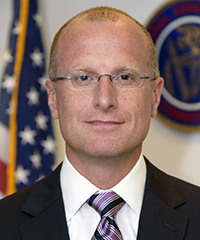
FCC Commissioner Brendan Carr has been nominated by Donald Trump to be the next FCC Chairman. Photo Credit: FCC
In addition, some expect long-awaited clarity on what agency oversees novel space missions like in-orbit servicing, assembly and manufacturing, or asteroid mining. Moreover, the experts anticipate increased openness about the use of satellite communications in federal programs fighting the digital divide.
Satellite Industry Association (SIA) President Tom Stroup said a policy shift that would include satellites becoming a qualified provider of broadband for federally funded programs is likely. The Biden administration effectively excluded satellite use, and there needs to be “an honest discussion” about the sector’s potential role, space lawyer Jim Dunstan said.
Space policy is often relatively consistent from administration to administration, though with some tweaks, said Michelle Hanlon, executive director of the Center for Air and Space Law at the University of Mississippi School of Law. She said that aside from a reduction of regulatory red tape, there also could be a reconciling of agencies’ orbital debris policies. Commercial space operators generally would like to see Commerce’s Office of Space Commerce as the regulator of novel space activities, as long as it is adequately staffed. But regardless of who has the oversight, the biggest need is a final decision on authority, she said. The Republican trifecta of the White House, the House and Senate could bring a resolution, Hanlon said.
The FCC under Carr might not be as aggressive as it has been on orbital debris regulation, but it won’t neglect it altogether, emailed Michael Dodge, University of North Dakota space studies associate professor. He said the space industry likely sees Carr as friendly toward its goals.
Summit Ridge Group’s Armand Musey stated that it’s hard to overstate SpaceX’s impact on the commercial space sector, and its progress will likely dominate most investment decisions. He said Carr’s seeming openness toward allowing satellite participation in broadband access programs like BEAD and the rural digital opportunity fund will benefit Starlink, but also Viasat and the industry broadly. At SpaceX’s urging, Carr is also likely more open than Democrats to increases in power levels for non-geostationary orbit satellite systems, Musey predicted. That could benefit direct-to-device operators, including Starlink, but also AST SpaceMobile, Globalstar and Lynk, he said. M&As under Carr and a Republican DOJ could be somewhat looser for space-related deals, and larger transactions might face fewer conditions, he added.
SpaceX CEO Elon Musk’s friendly relationship with President-elect Donald Trump and Carr could benefit commercial space operators broadly, but it’s also raising eyebrows, sources agree. Musk’s role as co-head of Trump’s Department of Government Efficiency advisory committee will provide him with considerable influence, “and people will wonder where the lines might blur between a business seeking governmental approvals, and an advisor seeking benefits for his business,” Dodge said.
References:
https://www.fcc.gov/about/leadership/brendan-carr
https://www.cnn.com/2024/11/18/media/brendan-carr-trump-fcc-nominee-project-2025/index.html
FCC: More competition for Starlink; freeing up spectrum for satellite broadband service
FCC approves EchoStar/Dish request to extend timeline for its 5G buildout
FCC restores net neutrality order, but court challenges loom large
Analysis: FCC attempt to restore Net Neutrality & U.S. standards for broadband reliability, security, and consumer protection
FCC Draft Net Neutrality Order reclassifies broadband access; leaves 5G network slicing unresolved
FCC increases broadband speed benchmark (x-satellites) to 100/20 Mbit/s
FCC legal advisor: Potential End of ACP Is the ‘Biggest Challenge’ Facing the Broadband Marketplace
Highlights of FCC Notice of Inquiry (NOI) on radio spectrum usage & how AI might be used


